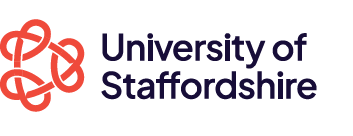Module Descriptors

CLINICAL OSTEOPATHY 4
OSTE60030
Key Facts
Health, Education, Policing and Sciences
Level 6
30 credits
Contact
Leader: Samuel O'Brien
Email: samuel.o'brien@staffs.ac.uk
Hours of Study
Scheduled Learning and Teaching Activities: 24
Independent Study Hours: 276
Total Learning Hours: 300
Assessment
- Clinical OSCE weighted at 50%
- Clinical Assessment weighted at 50%
Module Details
Module Additional Assessment Details
Clinical OSCE 50%
(Objective Structured Clinical Examination)
Learning outcomes 1-5 are assessed by a Clinical OSCE
Clinical assessments 50%
Learning outcomes are 1-6 assessed by clinical assessments
Additional Assessment Details:
Learning outcome 7 is assessed formatively in the classroom, with a business plan submitted in the IPP
(Objective Structured Clinical Examination)
Learning outcomes 1-5 are assessed by a Clinical OSCE
Clinical assessments 50%
Learning outcomes are 1-6 assessed by clinical assessments
Additional Assessment Details:
Learning outcome 7 is assessed formatively in the classroom, with a business plan submitted in the IPP
Module Indicative Content
This module aims to encourage the student to individualise their approach within osteopathic practice. It will allow them to become competent in a range of skills, including case management, advanced technical approaches within treatment, and to recognise the needs of the patient. Students will be expected to formulate and justify an osteopathic diagnosis and management plan according to individual patient needs, working independently but still under supervision. Students will critically evaluate osteopathy alongside other modes of healthcare provision and begin to understand the scope of osteopathic practice in the treatment of a range of patient groups. The module also aims to develop the business planning skills acquired in earlier Clinical Osteopathy modules to include detailed business planning to prepare for osteopathic practice.
The limited number of taught sessions are supported and developed by 300 hours of clinical practice, spread over the two-semester period. Activities will include interacting with patients, case history taking, osteopathic examination and treatment and management techniques under minimal supervision. Small group presentations, and discussions. Structured or semi-structured tutorials either in groups or individually
Syllabus -
Case history taking.
Clinical examinations, including both orthodox and osteopathic.
Referral of patients for further investigations.
Formulation of diagnosis, prognosis and treatment plan.
Osteopathic treatment and management interventions.
Evaluating treatment outcomes.
Modification of treatment according to response.
When to re-assess, when to refer and when to discharge patients.
Business Planning for Osteopathic Practice
The limited number of taught sessions are supported and developed by 300 hours of clinical practice, spread over the two-semester period. Activities will include interacting with patients, case history taking, osteopathic examination and treatment and management techniques under minimal supervision. Small group presentations, and discussions. Structured or semi-structured tutorials either in groups or individually
Syllabus -
Case history taking.
Clinical examinations, including both orthodox and osteopathic.
Referral of patients for further investigations.
Formulation of diagnosis, prognosis and treatment plan.
Osteopathic treatment and management interventions.
Evaluating treatment outcomes.
Modification of treatment according to response.
When to re-assess, when to refer and when to discharge patients.
Business Planning for Osteopathic Practice
Module Learning Strategies
CONTACT HOURS (24):
18 hours lectures
3 hours OSCE preparation
3 hours group reflection.
INDEPENDENT STUDY HOURS (276):
Teaching clinic - 200 hours
Background reading - 46 hours
log book preparation - 30 hours
18 hours lectures
3 hours OSCE preparation
3 hours group reflection.
INDEPENDENT STUDY HOURS (276):
Teaching clinic - 200 hours
Background reading - 46 hours
log book preparation - 30 hours
Module Resources
For Clinical Osteopathy 4 the key physical resource is the clinical environment provided by the College. The majority of teaching for clinical modules is delivered in the Osteopathic Teaching Clinic where there is access to all the necessary equipment and learning resources within an environment that meets standards specified and inspected by the General Osteopathic Council and Quality Assurance Agency for Higher Education.
Module Texts
Barrow, C (2005) The Complete Small Business guide: A Sourcebook for New and Small Business. Capstone Reference
Bates B. (2004) Bates' Guide to Physical Examination and Case History Taking (7th Ed) USA. J.B. Lippincott.
Beers, M. et al. (2006). The Merck Manual of Diagnosis and Therapy. (18th Ed.). Whitehouse Station: Merck.
DiGiovanna EL (2004) An Osteopathic Approach to Diagnosis and Treatment. USA JB Lippincott Co.
Ward (2002) Foundations of Osteopathic Medicine. 2nd Edition. USA. Williams & Wilkins.
Bates B. (2004) Bates' Guide to Physical Examination and Case History Taking (7th Ed) USA. J.B. Lippincott.
Beers, M. et al. (2006). The Merck Manual of Diagnosis and Therapy. (18th Ed.). Whitehouse Station: Merck.
DiGiovanna EL (2004) An Osteopathic Approach to Diagnosis and Treatment. USA JB Lippincott Co.
Ward (2002) Foundations of Osteopathic Medicine. 2nd Edition. USA. Williams & Wilkins.
Module Special Admissions Requirements
Admission requirements for students are that they have enhanced disclosure clearance from the Criminal Records Bureau, that they have fulfilled the criteria set out in the Fitness To Practice form (updated and completed annually) and that they have completed the Clinic Induction which includes the issuing of clinic log books (with clinic procedures and the code of conduct) and clinic uniform. Students must have successfully completed all year 1 and 2 modules, unless exemption has been agreed.